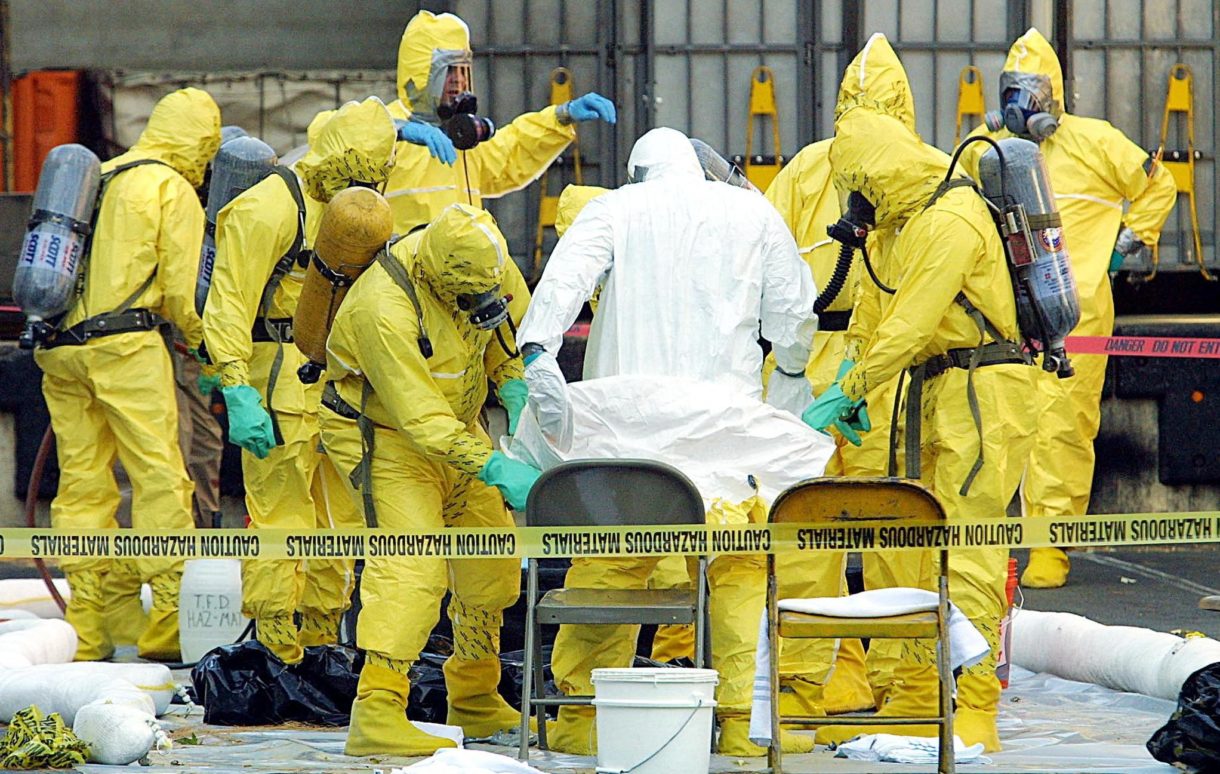Just a week after the 2001 al-Qaida attacks terrorized the U.S., anonymous letters with anthrax spores began arriving at congressional offices and media companies, killing five people, infecting 17 and unleashing its own wave of fear.
The FBI investigated inconclusively for years. The main suspect, Army anthrax specialist Bruce Ivins, committed suicide in 2008. The FBI closed the case two years later, saying in a report that Ivins acted alone. The report offered strong circumstantial evidence, though not direct proof.
As this case demonstrated, parcel attacks can be hard to solve. But tighter security and better technology now make it much more difficult to evade detection, according to experts.
“It’s harder to hide today,” said Daryl Johnson, the head of DT Analytics, a consulting firm for law enforcement.
Widespread surveillance
Deterrence now starts before a letter or package is even mailed, he said.
“We have a lot more surveillance cameras in America that are posted in office buildings and mail collection points,” said Johnson, who previously served as a senior analyst for domestic terrorism at the Department of Homeland Security.
When parcels are being processed, the Postal Service and delivery companies can take photographs or X-rays, and can track them digitally throughout their journey.
If the destination is a current or former high-ranking official, or a sensitive government facility, the mail will likely be examined at an off-site facility. This was the case with the suspicious packages sent to the private homes of the former president, Barack Obama, and the former secretary of state, Hillary Clinton, which were seized and never delivered.
This was also true with letters laced with the poison ricin, which were addressed to Defense Secretary Jim Mattis and other officials earlier this month.
The letters were confiscated at the Pentagon’s mail facility, which is on the grounds of the Pentagon, but not in the building itself. No one was hurt, and the FBI arrested a suspect in Utah who put his home address on the letters. The suspect, William Clyde Allen, was indicted on Thursday.
Johnson also cited the bomb attacks near Austin, Texas, this spring, where authorities traced the packages to a FedEx office.
At that point, authorities had several ways to go back and look at who might have mailed them: surveillance footage at FedEx; cell phone records to see if the suspect was in the area at the time, and street and highway cameras that read car license plates.
“They were able to isolate a general location and then put out surveillance teams to find this person,” he added.
As technology gets better, so do the skills of bomb squads that examine explosives for clues, said William Braniff, director of the University of Maryland’s National Consortium for the Study of Terrorism and Response to Terrorism.
“These are individuals who may have spent lots of time over in Afghanistan and Iraq, dealing with improvised explosive devices on a daily basis,” said Braniff.
“There’s a massive learning curve in those conflict zones,” he added. “Then you bring those people back home and you sit them down in a really high-tech lab. I’m certain that the level of skill across places like [Alcohol, Tobacco and Firearms], the FBI and the Department of Defense is much higher.”
An infrequent attack
Parcel bombs are rare, and rarely lethal, said Braniff.
Just 59 have been documented in the U.S. from 1970 through last year, killing seven people, he said.
“It’s rare to see explosives being used in the United States in recent years and it’s even more rare to see parcel bombs coordinated at high-level targets,” he said.
Attacks with anthrax, ricin or other dangerous substances were almost extremely rare before the turn of the century. But 21 such attacks have been recorded in the U.S. since 2000, he noted.
Still, the impact of potentially deadly mail parcels can be immense, said Braniff. In some previous cases, perpetrators probably didn’t care whether their packages explodes.
“The threat of violence, and the media coverage of the threat of violence, and the political and psychological fallout of that threat of violence, that may be enough for the perpetrator,” he said. “Whether or not the bomb goes off, it aids in the polarization of our society.”
For Braniff, the country’s response is critical.
“I know everybody wants to talk about who did it and what the motive is,” he said. But, he added, “our actions are either going to exacerbate polarization or they’re going to minimize it. I would encourage leaders and the media to do whatever we can to minimize the damage on our social fabric. It’s already weak enough.”
9(MDEwNzczMDA2MDEzNTg3ODA1MTAzZjYxNg004))
